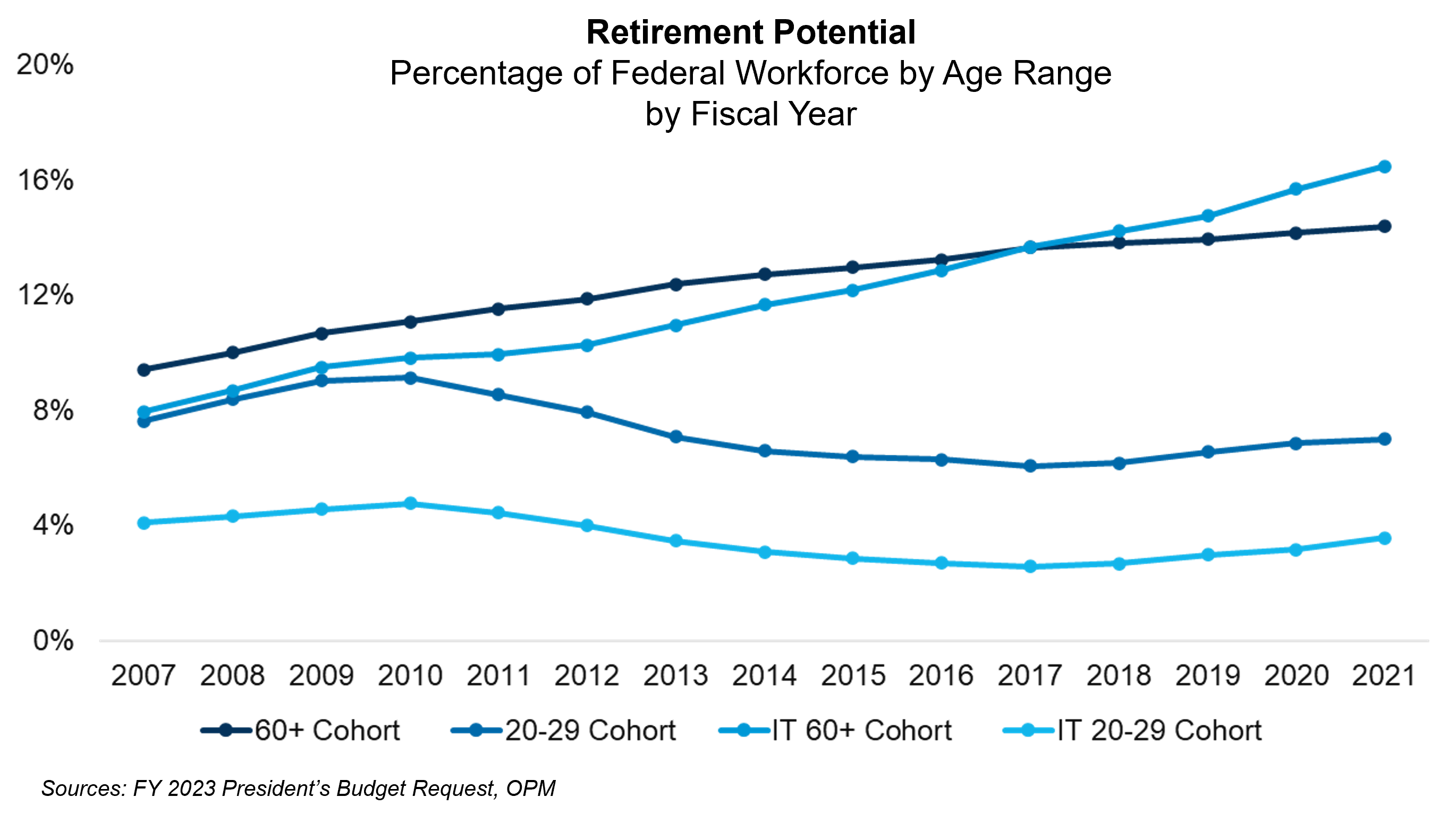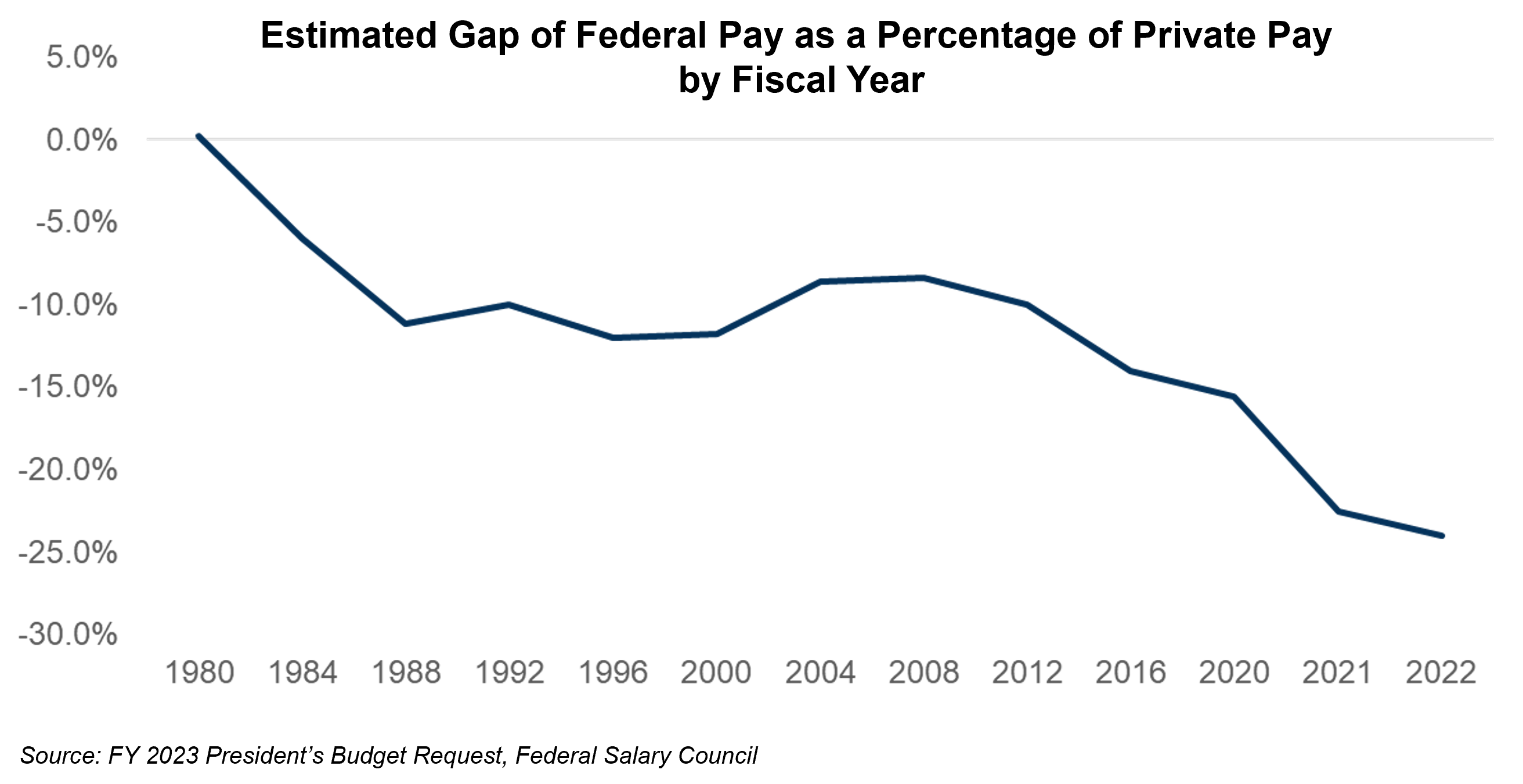Workforce Trends to Watch in 2023
Published: November 17, 2022
Federal Market AnalysisContracting TrendsIT Workforce
The federal government, along with federal contractors, face numerous workforce challenges related to hiring, recruitment, retention, diversity, inclusion, skill development, wage inflation, and demand for a flexible work environment which will help shape the 2023 federal contracting environment.
Federal workforce retirement potential is on the rise. In 2023, 30% of the federal workforce will be eligible for retirement. The percentage of the workforce reaching age 60+ is growing each year, while employees in the 20-29 year-old age range are only increasing slightly.
The age gap is even more pronounced for the information technology workforce. There are 4.4 IT specialists age 60 or older for every one person under 30. Greater than 30% of the federal cyber workforce is over age 55. Less than 6% are under the age of 30.
As the federal government continues its modernization efforts across agencies, it faces a severe shortage of digital expertise in fields such as AI, data science, application development, cybersecurity, and robotics process automation. In 2021, GAO added federal IT workforce issues to the high-risk list.

Another workforce challenge faced by the federal government is pay rates. The gap between federal and private sector pay is growing yearly. U.S. average worker pay rose by 38% between 2009 and 2020 but federal civilian pay only increased by 15%. Data released in October 2022 by the Federal Salary Council showed that federal workers earn about 24% less, on average than their private sector counterparts, up from 22.5% in 2021.

The pay differential increases attrition risk within the federal workforce and reduces the competitiveness of federal jobs. Federal pay adjustments have not kept pace with the national labor market overall, or increases in the cost of goods, services, and benefits.
Other federal human capital challenges include the lack of qualified candidates, lack of targeted recruitment, duration of the hiring process, difficult application process, and competition with the private sector for talent.
Numerous efforts are underway by the Biden administration, OPM, and agencies to strengthen and empower the federal workforce. The FY 2023 President’s Budget Request, along with the President’s Management Agenda, seeks to bolster the federal workforce. The administration is committed to the workforce and aims to be a model employer by ensuring a safe work environment, bolstering employee engagement, fostering intern and early career hiring, and promoting diversity, equity, inclusion, and accessibility.
Not only is the federal government wrestling with filling workforce skill gaps, but contractors are facing many of the same workforce issues. Contractors are working to manage costs due to elevated inflation while also investing in talent while balancing benefits and salary expenses to remain competitive from an employment standpoint. Companies are also trying to increase the speed of onboarding and deployment to shorten the time to make new hires billable.
Deltek’s annual Clarity Survey of government contractors found that the pandemic unveiled new opportunities for talent recruitment but also presented challenges, such as intense competition for top talent. Deltek’s survey revealed that the top challenges for acquiring new talent are the availability of good candidates, matching candidates to a position, and attracting better-qualified candidates.
In 2023, contractors can expect continued federal efforts to resolve human capital challenges, competition with agencies and the commercial sector for talent, rising employment costs, the need for better labor pricing strategies, and contracting opportunities aimed at filling federal workforce gaps.
For more information on trends to watch in the federal contracting community in 2023, look for Deltek’s new report slated for publication in early December.